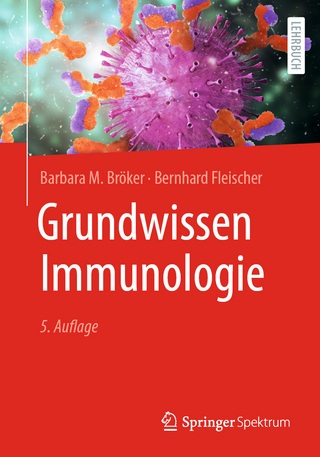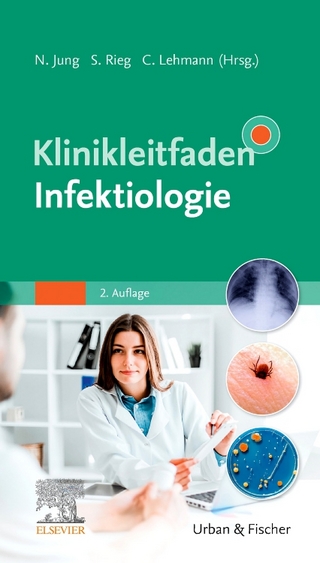
Fibronectins
Springer-Verlag New York Inc.
978-0-387-97050-9 (ISBN)
- Titel ist leider vergriffen;
keine Neuauflage - Artikel merken
1. Introduction and Historical Overview.- 1.1 Beginnings: 1948-1976.- 1.2 Development: 1975-1977.- 1.3 An Expanding Field: 1978-1982.- 1.4 The Impact of Molecular Biology: 1983-1988.- 2. Methods for Identification of Fibronectins.- 2.1 Definitions.- 2.2 Purification of Fibronectins.- 2.3 Preparation of Antibodies.- 2.4 Immunofluorescence and Immunoperoxidase Staining.- 2.5 Immunoprecipitation.- 2.6 Radioimmunoassay (RIA) and Enzyme Immunoassay (ELISA).- 2.7 Other Immunological Assays.- 2.8 Surface Labeling of Cells.- 3. Distribution of Fibronectins in Vivo.- 3.1 Phylogenetic Distribution of Fibronectins.- 3.1.1 Mammals and Birds.- 3.1.2 Amphibians, Fish, and Reptiles.- 3.1.3 Invertebrates.- 3.2 Fibronectins of Body Fluids.- 3.2.1 Plasma.- 3.2.2 Amniotic Fluid.- 3.2.3 Bronchoalveolar Lavage Fluid.- 3.2.4 Synovial Fluid.- 3.2.5 Cerebrospinal Fluid.- 3.2.6 Seminal Plasma.- 3.2.7 Other Body Fluids.- 3.3 Distribution of Fibronectin in Matrices in Vivo.- 3.3.1 Technical Aspects.- 3.3.2 Immunolocalization of Fibronectin.- 3.3.3 Basal Lamina or Basement Membrane?.- 3.3.4 Fibronectin in the Kidney.- 3.3.5 Conclusions.- 4. Expression of Fibronectins by Cells in Culture.- 4.1 General Comments and Experimental Criteria.- 4.2 Fibroblasts.- 4.3 Mesenchymal Cells.- 4.4 Chondrocytes.- 4.5 Myoblasts and Myotubes.- 4.6 Smooth and Cardiac Muscle Cells.- 4.7 Endothelial Cells.- 4.8 Platelets.- 4.9 Neutrophils.- 4.10 Macrophages.- 4.11 Neural Crest Cells.- 4.12 Astrocytes.- 4.13 Schwann Cells.- 4.14 Neurons and Neuroblastomas.- 4.15 Hepatocytes.- 4.16 Kidney Cells.- 4.17 Mammary Gland Cells.- 4.18 Amniotic Epithelial Cells.- 4.19 Keratinocytes.- 4.20 Other Epithelial Cells.- 4.21 Teratocarcinoma Cells and Their Derivatives.- 5. Interactions of Fibronectins.- 5.1 Gelatin and Collagen.- 5.2 Fibrin and Fibrinogen.- 5.3 Factor XHIa and Other Transglutaminases.- 5.4 Glycosaminoglycans and Proteoglycans.- 5.5 Gangliosides and Phospholipids.- 5.6 Actin and Other Cytoskeletal Proteins.- 5.7 DNA.- 5.8 Clq Component of Complement.- 5.9 Amyloid P and C-Reactive Protein.- 5.10 Acetylcholinesterase.- 5.11 Thrombospondin.- 5.12 Conclusions.- 6. Structure of Fibronectins.- 6.1 Overview.- 6.2 Fragmentation and Location of Binding Sites.- 6.2.1 The N-Terminal Domain.- 6.2.2 The Gelatin-Binding Domain.- 6.2.3 The Central Region of the Molecule.- 6.2.4 The Cell-Binding Domain.- 6.2.5 The High-Affinity Heparin-Binding Domain.- 6.2.6 The C-Terminal Fibrin-Binding Domain.- 6.2.7 The C-Terminal Interchain Disulfide Bonds.- 6.2.8 Conclusion.- 6.3 Primary Structure.- 6.3.1 General Features.- 6.3.2 The N-Terminal Domain: Type I Homologies.- 6.3.3 The Gelatin-Binding Domain: Type I and Type II Homologies.- 6.3.4 The C-Terminal Region: More Type I Homologies.- 6.3.5 The Type III Central Region.- 6.3.6 The Leader Sequence of FN.- 6.3.7 Conclusions, Speculations, and Future Directions.- 6.4 A Single Fibronectin Gene Encodes Multiple Fibronectins.- 6.4.1 Exon-Intron Structure.- 6.4.2 The Promoter and Terminator Regions.- 6.4.3 Alternative Splicing.- 6.4.4 Different Forms of Fibronectin Arise by Alternative Splicing.- 6.4.5 Possible Functions of Variable Segments.- 6.5 Post-Translational Modifications.- 6.5.1 Glycosylation.- 6.5.2 Phosphorylation and Sulfation.- 6.6 Secondary and Tertiary Structure.- 6.6.1 Overall Conformation.- 6.6.2 Secondary Structure.- 6.6.3 Domain Structure of Fibronectin.- 6.6.4 Effects of Interactions with Other Components.- 6.7 Conclusions.- 7. Biosynthesis and Fibrillogenesis.- 7.1 Kinetics of Synthesis and Glycosylation.- 7.2 Disulfide Bonding.- 7.3 Composition of the Extracellular Matrix.- 7.3.1 Other Glycoproteins and Collagens.- 7.3.2 Proteoglycans.- 7.3.3 Ultrastructure of the Matrix.- 7.4 Matrix Formation and Structure.- 7.4.1 In Vitro Analyses.- 7.4.2 In Situ Analyses.- 7.4.3 The Role of the Cells.- 7.5 Regulation of Levels of Fibronectin.- 7.5.1 Culture Conditions.- 7.5.2 Polypeptide Growth Factors: EGF and TGF-ss.- 7.5.3 Interferon.- 7.5.4 Steroid and Thyroid Hormones.- 7.5.5 Cyclic Nucleotides.- 7.5.6 Conclusion.- 8. Cellular Adhesion and Cell Surface Receptors.- 8.1 Fibronectin Binding to Substrata.- 8.2 Attachment and Spreading of Cells on Fibronectin.- 8.3 Role of Other Molecules in Cellular Adhesion.- 8.4 Role of Fibronectin in Later Steps of Cellular Adhesion.- 8.4.1 Multiple Cell-Binding Sites in Fibronectin.- 8.5 Cell Surface Receptors for Fibronectin.- 8.5.1 Evidence for a Role of Glycoproteins.- 8.5.2 Integrins: A Family of Cell Surface Receptors.- 8.5.3 Evidence for a Role of Gangliosides.- 8.5.4 Evidence for a Role of Proteoglycans.- 8.5.5 Conclusions and Speculations.- 9. Fibronectin and the Cytoskeleton.- 9.1 Correlations and Reciprocal Effects.- 9.2 Microscopic Evidence.- 9.2.1 Codistribution of FN and Actin.- 9.2.2 Codistribution of Other Cytoskeletal Proteins.- 9.2.3 Fibronectin Associated with Focal Contacts and/or Attachment Plaques.- 9.3 Integrins and the Transmembrane Connection.- 10. Cell Migration.- 10.1 Fibronectin and Cell Migration in Vitro.- 10.2 Fibronectin and Cell Migration in Embryos.- 10.2.1 Avian Gastrulation.- 10.2.2 Amphibian Gastrulation.- 10.2.3 Echinoderm Gastrulation.- 10.2.4 Early Mammalian Embryos.- 10.2.5 Neural Crest Migration.- 10.2.6 Area Vasculosa.- 10.2.7 Primordial Germ Cells.- 10.2.8 Eye Development.- 10.2.9 Cardiac Development.- 10.2.10 Neurite Outgrowth.- 10.3 Fibronectin and the Logic of Cell Migration.- 10.3.1 Directionality and Vectors.- 10.3.2 Barriers to Migration and Choice of Pathways.- 10.3.3 Origin of Pathways.- 10.3.4 Initiation and Termination of Migration.- 11. Development and Differentiation.- 11.1 Morphogenesis.- 11.1.1 Gastrulation.- 11.1.2 Neurulation and Somitogenesis.- 11.1.3 Formation of Organs via Epithelial-Mesenchymal Interactions.- 11.1.4 Potential Functions for FN in Morphogenetic Processes.- 11.1.5 Limb Bud Development.- 11.2 Differentiation and Growth.- 11.2.1 Chondrogenesis and Osteogenesis.- 11.2.2 Myogenesis.- 11.2.3 Adipogenesis and Steroidogenesis.- 11.2.4 Hematopoiesis.- 11.2.5 Proliferation and Differentiation.- 11.3 Conclusion.- 12. Oncogenic Transformation.- 12.1 Altered FN Expression.- 12.1.1 Loss of FN from Virally Transformed Cells in Vitro.- 12.1.2 Expression of FN by Other Transformed Cells in Vitro.- 12.1.3 Effects of Phorbol Esters.- 12.1.4 Distribution of FN in Tumors in Vivo.- 12.1.5 Effects of Tumors on FN Levels in Plasma and Elsewhere.- 12.1.6 Correlations between Fibronectin Expression in Vitro and Tumor Development in Vivo.- 12.1.7 Conclusions.- 12.2 Phenotypic Consequences of Altered FN Expression.- 12.2.1 Restoration of FN to Transformed Cells.- 12.3 Possible Mechanisms of Loss of FN.- 12.3.1 Alterations in Biosynthetic Rate.- 12.3.2 Alternative Splicing of FN mRNA.- 12.3.3 Posttranslational Modifications.- 12.3.4 Transformation-Induced Proteolysis.- 12.3.5 Effects on the Cytoskeleton.- 12.3.6 Alterations in Integrins.- 12.3.7 Conclusions.- 13. Hemostasis and Thrombosis.- 13.1 Fibronectin and Platelets.- 13.1.1 Occurrence.- 13.1.2 Release and Binding of Fibronectin.- 13.1.3 Receptors for FN on Platelet Cell Surfaces.- 13.1.4 Functional Roles of Fibronectin.- 13.1.5 Potential for Clinical Application.- 13.2 Fibronectin in Blood Clots.- 14. Wound Healing, Inflammation, and Fibrosis.- 14.1 Wound Healing.- 14.1.1 Cutaneous Wound Healing.- 14.1.2 Corneal Wound Healing.- 14.1.3 Therapeutic Treatments with Fibronectin.- 14.2 Inflammation and Fibrosis.- 14.2.1 Fibrosis of the Lung.- 14.2.2 Fibronectin in Arthritis.- 14.2.3 Proliferative Vitreoretinopathy.- 14.3 Conclusions and Future Prospects.- 15. Phagocytosis and Interactions with Pathogenic Microorganisms.- 15.1 Role of Fibronectin in Phagocytosis.- 15.2 Fibronectin Binding to Microorganisms.- 15.2.1 Staphylococci.- 15.2.2 Streptococci.- 15.2.3 Gram-Negative Bacteria.- 15.2.4 Treponema pallidum (Syphilis).- 15.2.5 Yeasts.- 15.2.6 Parasitic Protozoa.- 15.2.7 Is FN Binding to Microorganisms Advantageous or Disadvantageous?.- 15.3 Plasma Fibronectin, Reticuloendothelial Function, Trauma, and Sepsis.- 15.3.1 Is pFN a Nonspecific Opsonin?.- 15.3.2 What Are the Implications of Fluctuations in pFN Levels?.- 15.3.3 Is pFN Injection an Effective Therapy?.- 15.3.4 Conclusions.- 16. Implications for Future Research.- 16.1 Molecular Issues.- 16.2 Cellular Issues.- 16.3 Issues of Developmental Biology.- 16.4 Issues of Physiology and Pathology.- References.
| Reihe/Serie | Springer Series in Molecular and Cell Biology |
|---|---|
| Zusatzinfo | biography |
| Verlagsort | New York, NY |
| Sprache | englisch |
| Gewicht | 1050 g |
| Themenwelt | Sachbuch/Ratgeber ► Gesundheit / Leben / Psychologie ► Lebenshilfe / Lebensführung |
| Sachbuch/Ratgeber ► Natur / Technik ► Natur / Ökologie | |
| Sachbuch/Ratgeber ► Natur / Technik ► Naturführer | |
| Medizin / Pharmazie ► Medizinische Fachgebiete ► Dermatologie | |
| Studium ► Querschnittsbereiche ► Infektiologie / Immunologie | |
| Naturwissenschaften ► Biologie ► Biochemie | |
| Naturwissenschaften ► Biologie ► Zellbiologie | |
| ISBN-10 | 0-387-97050-9 / 0387970509 |
| ISBN-13 | 978-0-387-97050-9 / 9780387970509 |
| Zustand | Neuware |
| Informationen gemäß Produktsicherheitsverordnung (GPSR) | |
| Haben Sie eine Frage zum Produkt? |
aus dem Bereich


